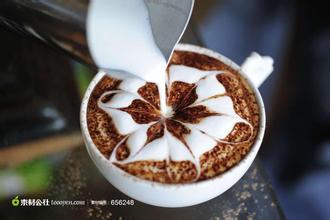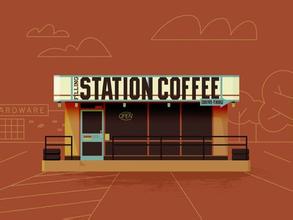Flavor description of Costa Rican Yersalo Coffee with mellow taste introduction to the producing areas
There are many kinds of coffee here, but its industrial policy is large and cheap, so there is not much premium coffee, but it is a good choice for mixing other coffees.
One of the most famous is Mountain Costa Rica Coffee, which tastes mellow and neutral. It can be boiled directly or mixed with other kinds of coffee beans to form a mixed coffee. It is also a good choice.
Other kinds of Brazilian coffee, such as Rio and Parana, can be produced in large quantities because they do not require too much care. Although the taste is rough, it is a kind of high-quality and inexpensive coffee, which has its own standards because it is distributed all over the country and varies in quality (NO.2~NO.8 according to the number of sundries, NO.13~NO.19 according to the size of beans, and six grades according to taste). Almost all Arabica species have good quality and stable prices, and the most famous is "Costa Rica". Since ancient times, the coffee beans produced in the high latitudes of Costa Rica, which are the necessities of blended coffee, are famous in the world, full-bodied, mild in taste, but extremely sour. The coffee beans here have been carefully processed, and that is why there is high-quality coffee. Located in the south of SanJos é, the capital of Tarasu, Costa Rica is one of the most valued coffee growers in the country. Tarrazu is one of the major coffee producing areas in the world. Coffee was introduced to Costa Rica from Cuba in 1729. Today, its coffee industry is one of the well-organized industries in the world, with an output of 1700 kg per hectare. Costa Rica has only 3.5 million people but 400m coffee trees, and coffee exports account for 25 per cent of the country's total exports. Costa Rica's volcanic soil is very fertile and well drained, especially in the central plateau CentralPlateau, where the soil consists of successive layers of ash and dust. Costa Rica was therefore the first country in Central America to grow coffee and bananas for commercial value. Coffee and bananas are the country's main exports. High-quality Costa Rican coffee, known as "extra hard beans", can grow above 1500 meters above sea level. Altitude has always been a problem for coffee growers. The higher the altitude, the better the coffee beans, not only because the higher altitude can increase the acidity of the coffee beans and thus increase the flavor, but also because the night temperature at the higher altitude is lower, which can make the trees grow slowly, thus making the coffee beans have a stronger flavor. In addition, due to the high altitude drop caused by sufficient rainfall, is also very beneficial to the growth of coffee trees. However, while there are many advantages to growing coffee at higher elevations, the resulting additional transport costs must be taken into account, which is likely to make coffee production unprofitable. The coffee industry in Costa Rica has adopted new technologies to increase efficiency, including the use of "electric eyes" to select beans and identify coffee beans of irregular size.
In Costa Rica, people unload coffee fruits from ox carts
Costa Rican coffee
Atlas of origin
Tarasu, located in the south of the country's capital, SanJos é, is one of the country's most valued coffee growers. LaMinitaTarrazu coffee is a famous local product, but its production is limited, about 72600 kilograms a year. It is grown on a piece of land called LaMinita, which is owned by nearly three generations of the McAlpine family in the UK. In fact, this land can produce more than 450 tons of coffee a year. However, the cultivation of Tarasu Latin American coffee does not use artificial fertilizers or insecticides, and its harvest and selection are all done by hand, in order to avoid the damage to coffee beans caused by air spray selection to some extent.

Important Notice :
前街咖啡 FrontStreet Coffee has moved to new addredd:
FrontStreet Coffee Address: 315,Donghua East Road,GuangZhou
Tel:020 38364473
- Prev

Faint aroma of Dominica Santo Domingo Coffee introduction to boutique coffee
The earliest coffee in Dominica was introduced from Martinique (the overseas province of France), dating back to the early 18th century. Dominica is an island country with a tropical climate. The temperature changes little throughout the year. Except for the lower temperature in the Central Cordillera Mountains, which can reach less than 0 ℃ in winter, the annual average temperature in other areas is between 25 and 30 ℃, which is affected by the mountain topography.
- Next

Dominica Coffee Variety characteristics and Flavor description introduction to Fine Coffee beans in Manor
L'Or é al arrived in Santo Domingo in 1801. He abolished slavery on behalf of the French government. In 1802, Napoleon sent troops to conquer the whole island and ruled for several months. In October 1802, mixed-race and black people revolted against French rule and repelled the French army in 1803. On January 1, 1804, the rebels declared Santo Domingo independent and established the Republic of Haiti. But be defeated.
Related
- Detailed explanation of Jadeite planting Land in Panamanian Jadeite Manor introduction to the grading system of Jadeite competitive bidding, Red bid, Green bid and Rose Summer
- Story of Coffee planting in Brenka region of Costa Rica Stonehenge Manor anaerobic heavy honey treatment of flavor mouth
- What's on the barrel of Blue Mountain Coffee beans?
- Can American coffee also pull flowers? How to use hot American style to pull out a good-looking pattern?
- Can you make a cold extract with coffee beans? What is the right proportion for cold-extracted coffee formula?
- Indonesian PWN Gold Mandrine Coffee Origin Features Flavor How to Chong? Mandolin coffee is American.
- A brief introduction to the flavor characteristics of Brazilian yellow bourbon coffee beans
- What is the effect of different water quality on the flavor of cold-extracted coffee? What kind of water is best for brewing coffee?
- Why do you think of Rose Summer whenever you mention Panamanian coffee?
- Introduction to the characteristics of authentic blue mountain coffee bean producing areas? What is the CIB Coffee Authority in Jamaica?

